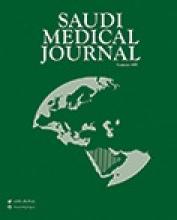Abstract
Objectives: To assess gender preference concerning different healthcare specialties, and investigate reasons behind gender preferences among male and female attendees at the primary healthcare (PHC), King Khalid University Hospital (KKUH), Riyadh, Saudi Arabia.
Methods: In this cross-sectional study, a sample of 150 males and 150 females, 18 years and above were randomly selected. The 2 proportion sample size equation was used to estimate the suitable sample size for our study. An Arabic translated specially-designed, self-administered questionnaire were distributed at the waiting area of the PHC. It covered personal data, preference of physicians’ gender for 24 different specialties, reasons behind choosing a specific gender, and physicians’ characteristics, if gender does not matter to them. A previous pilot study was carried out to assess reliability of the questionnaire.
Results: The results are statistically significant for most of the specialties (p=0.001). Male physicians were preferred by both genders for surgical specialties (such as, 50% of males and 39% of females in General Surgery), as people believe they are more knowledgeable. For medicine, women preferred to be examined by the same gender (54% in Internal Medicine), whereas men mostly had no gender preference (55% in Internal Medicine). When it comes to obstetric and gynecologic care, both genders (67% males and 85% females) preferred a female physician, stating embarrassment as the main reason for the choice.
Conclusion: Attendees appeared to have gender preference regarding their physician in some specialties. However, the most in demand physician’s character is the years of experience. Results of this study may influence future physicians in choosing their specialty. We recommend collecting the overall population preference, and broaden the scope of the search, as this may reveal interestingly results.
Footnotes
Disclosure. Authors have no conflict of interests, and the work was not supported or funded by any drug company.
- Copyright: © Saudi Medical Journal
This is an open-access article distributed under the terms of the Creative Commons Attribution-Noncommercial-Share Alike 3.0 Unported, which permits unrestricted use, distribution, and reproduction in any medium, provided the original work is properly cited.






